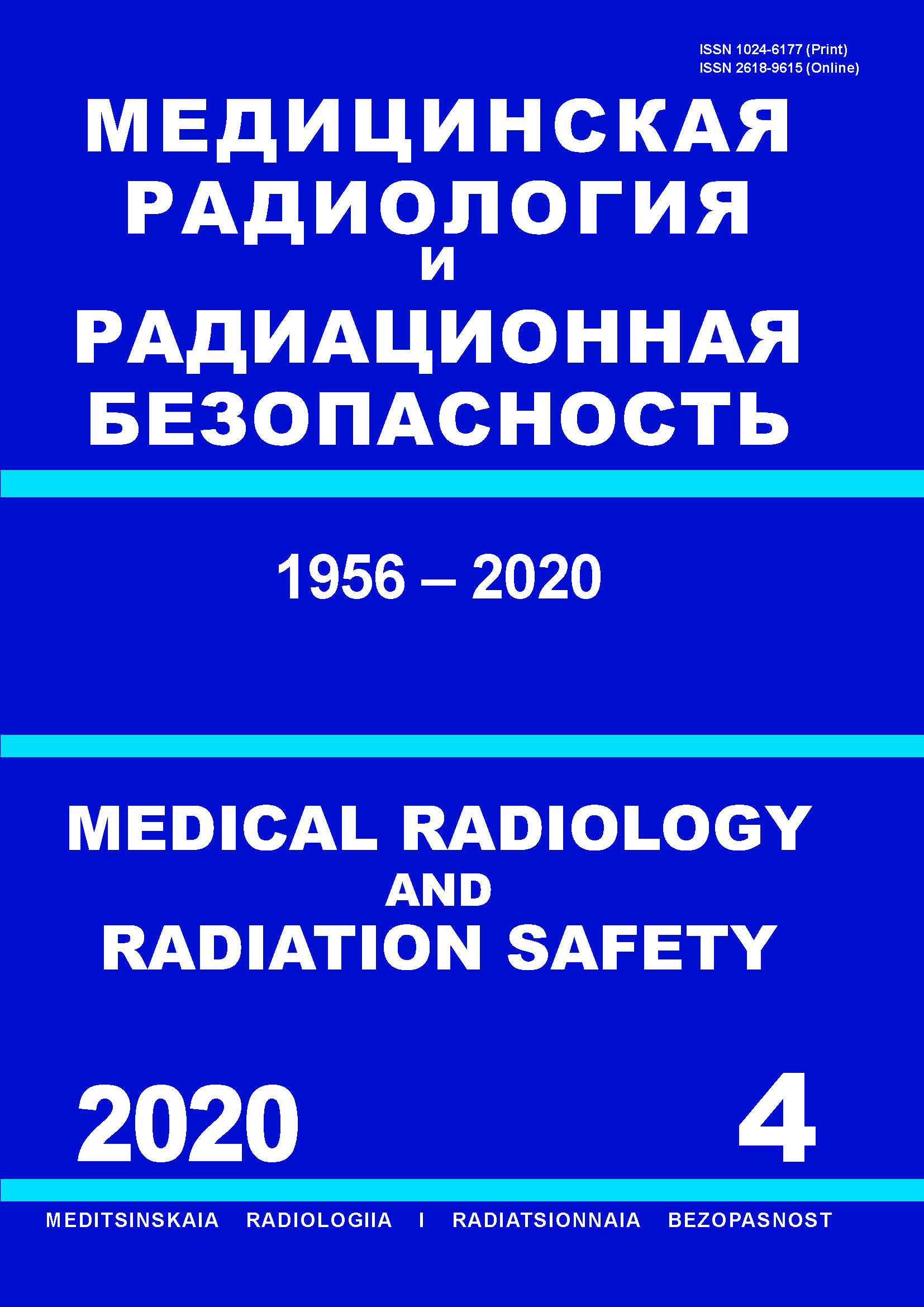Chelyabinsk State University, Chelyabinsk, Russia
Russian Federation
VAK Russia 14.02.2003
VAK Russia 14.02.2004
UDC 61
CSCSTI 76.01
CSCSTI 76.29
CSCSTI 76.35
CSCSTI 87.25
Russian Classification of Professions by Education 31.06.2001
Russian Classification of Professions by Education 31.08.71
Russian Classification of Professions by Education 32.04.01
Russian Library and Bibliographic Classification 51
Russian Library and Bibliographic Classification 54
Russian Library and Bibliographic Classification 56
Russian Library and Bibliographic Classification 57
Russian Library and Bibliographic Classification 58
Russian Trade and Bibliographic Classification 5706
Russian Trade and Bibliographic Classification 5708
Russian Trade and Bibliographic Classification 5734
Russian Trade and Bibliographic Classification 577
BISAC MED080000 Radiology, Radiotherapy & Nuclear Medicine
Purpose: Assessment of solid cancer incidence risk in the cohort of exposed population on the territory of the East Urals radioactive trace over the period of follow-up from 1957 to 2014 with the use of the individual doses provided by the latest TRDS dosimetry system. Material and methods: The explosion of the liquid radioactive waste storage tank at the «Mayak» Production Association on 29 September 1957 led to the pollution of the territories of the Chelyabinsk and Sverdlovsk Regions and the formation of the EURT, and the population residing on its territory was subjected to protracted chronic external and internal exposure. The analyzed cohort includes 21,384 people, 2,055 of whom received additional radiation before the 1957 accident due to residing in one of the Techa River settlements. The mean dose to the stomach for the members of the EURT cohort was 36 mGy, the maximum — 1.13 Gy. The analysis was performed using the DATAB and AMFIT programs (statistical software package EPICURE). A simple parametric model of excess relative risk (ERR) was used. Statistical significance and confidence intervals were obtained using the maximum likelihood method. Results: As a result of the analysis of the solid cancer incidence risk in the EURT cohort during the 57-year follow-up period using the linear model and the 5-year latent period, a statistically significant ERR was obtained which equals to 0.052 / 100 mGy (95 % CI 0.01–0.10, p = 0.02) in the entire EURT cohort. When the group of people additionally exposed on the Techa River before the 1957 accident was excluded from the cohort, the risk became insignificant. No significant modification of the dose dependence by non-radiation factors was revealed. The obtained results are compared well with the previous studies of the exposed population in the Southern Urals which were conducted in the Urals Research Center for Radiation Medicine, as well as in the world, devoted to the study of the effects of radiation exposure on population.
population, radiation risk, East Urals radioactive trace (EURT), solid cancer, incidence risk, excessive relative risk
1. Medical-biological and ecological impacts of radioactive contamination of the Techa River. Eds.: Akleyev AV, Kiselev MF. Moscow. 2001. 530 p. (In Russ.).
2. Consequences of radioactive contamination of the Techa River. Akleyev AV (ed). Chelyabinsk. 2016. 400 p. (In Russ.).
3. Akleyev AV, Kosenko MM, Krestinina LYu, Shalaginov SA, Degteva MO, Startsev NV. Health status of population exposed to environmental contamination in the Southern Urals. Moscow. 2001. (In Russ.).
4. East-Urals radioactive trace. Eds.: Akleyev AV, Kiselev MF. Chelyabinsk. 2012. (In Russ.).
5. Buldakov LA. Medical consequences of the radiation accident in the Southern Urals in 1957. Med Radiology. 1990;35(12):11-
6. Ecological and medical consequences of the radiation accident in 1957 at the Mayak PA. Eds.: Akleyev AV, Kiselev MF. Moscow. 2001:186-212. (In Russ.).
7. Burnazyan AI. The results of the study and experience of consequences liquidation of emergency contamination of the territory by the fission products of uranium. Moscow. 1990, 144 p. (In Russ.).
8. Kostyuchenko VA, Krestinina LY. Long-term irradiation effects in the population evacuated from the East Urals radioactive trace area. Science Total Environment. 1994;142:119-25.
9. Krestinina LYu, Akleev AV. Cancer mortality under chronic exposure of low and moderate radiation doses in the cohort of persons who were exposed due to the EURT. Bulletin of Siberian Medicine, 2005;4(2):36-44. (In Russ.).
10. Krestinina LYu, Silkin SS, Epifanova SB. Analysis of solid cancer mortality risk for the population exposed in the territory of East-Urals radioactive trace over a 50-year period. Radiation Hygiene. 2014;7(1):23-9. (In Russ.).
11. Silkin SS, Krestinina LYu, Tolstykh EI, Epifanova SB. Analysis of solid cancer incidence risk among the population exposed in the East Urals Radioactive Trace over 1957-2009. Radiation Hygiene. 2017;10(1):36-46. (In Russ.). DOI:https://doi.org/10.21514/1998-426x-2017-10-1-36-46.
12. Degteva MO, Napier BA, Tolstykh EI, et al. Enhancements in the Techa River Dosimetry System: TRDS-2016D code for reconstruction of deterministic estimates of dose from environmental exposures. Health Phys. 2019;117(4):378-87.
13. Preston DL, Lubin JH, Pierce DA, McConney ME. Epicure Users Guide. Seattle, Washington: Hirosoft International Corporation; 1993.
14. Davis FG, Krestinina LYu, Preston D, et al. Solid cancer incidence in the Techa River Incidence Cohort: 1956-2007. Radiat Res. 2015;184:56-65. DOI:https://doi.org/10.1667/RR14023.1.
15. Schonfeld SJ, Krestinina LYu, Epifanova SB, et al. Solid cancer mortality in the Techa River Cohort (1950-2007). Radiat Res. 2013;179(2):183-9. DOI:https://doi.org/10.1667/RR2932.1.
16. Silkin SS, Krestinina LYu, Startsev VN, Akleev AV. Ural cohort of emergency-irradiated population. Medicine of Extreme Situations. 2019;21(3):393-402. (In Russ.).
17. Preston DL, Sokolnikov ME, Krestinina LYu, Stram DO. Estimates of radiation effects on cancer risks in the Mayak worker, Techa River and atomic bomb survivor studies. Radiat Prot Dosim. 2017;173(1):26-31. DOI:https://doi.org/10.1093/rpd/ncw316.
18. Richardson DB, et al. Risk of cancer from occupational exposure to ionising radiation: retrospective cohort study of workers in France, the United Kingdom, and the United States (INWORKS). BMJ. 2015;351:5359. DOI:https://doi.org/10.1136/bmj.h5359.





